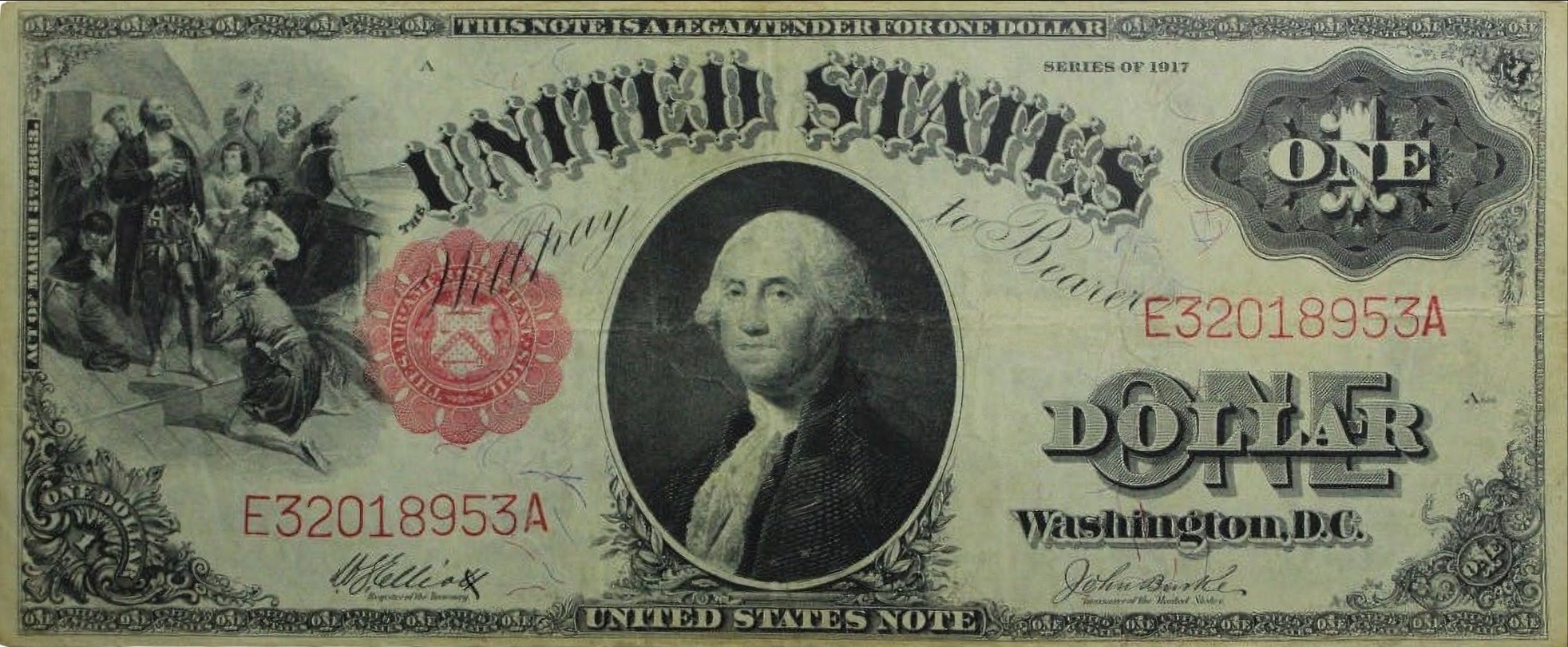United States dollar The U.S. dollar bill uses the decimal system, consisting of 100 equal cents (symbol ¢). In another division, there are 1,000 mills or ten dimes to a dollar, or 4 quarters to a dollar. However, only cents are in everyday use as divisions of the dollar; "dime" is used solely as the name of the coin with the value of 10¢, while "eagle" and "mill" are largely unknown to the general public, though mills are sometimes used in matters of tax levies and gasoline prices. When currently issued in circulating form, denominations equal to or less than a dollar are emitted as U.S. coins while denominations equal to or greater than a dollar are emitted as Federal Reserve notes (with the exception of gold, silver and platinum coins valued up to $100 as legal tender, but worth far more as bullion). Both one-dollar coins and notes are produced today, although the note form is significantly more common. In the past, "paper money" was occasionally issued in denominations less than a dollar (fractional currency) and gold coins were issued for circulation up to the value of $20 (known as the "double eagle," discontinued in the 1930s). The term eagle was used in the Coinage Act of 1792 for the denomination of ten dollars, and subsequently was used in naming gold coins. In 1854, James Guthrie, then Secretary of the Treasury, proposed creating $100, $50 and $25 gold coins, which were referred to as a "Union," "Half Union," and "Quarter Union," thus implying a denomination of 1 Union = $100.
Today, USD notes are made from cotton fiber paper, unlike most common paper, which is made of wood fiber. U.S. coins are produced by the United States Mint. U.S. dollar banknotes are printed by the Bureau of Engraving and Printing, and, since 1914, have been issued by the Federal Reserve. The "large-sized notes" issued before 1928 measured 7.42 inches (188 mm) by 3.125 inches (79.4 mm); small-sized notes, introduced that year, measure 6.14 inches (156 mm) by 2.61 inches (66 mm) by 0.0043 inches (0.11 mm).


























